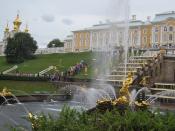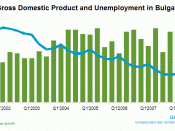Economic Profile of Russia
With our small business venture of importing Diesel jeans to Moscow, Russia, it is necessary to examine not only the current but also the past economical statistics to give a greater knowledge of the country's welfare.
Gross Domestic Product in Russia:
In 2003, Russia's real gross domestic product (GDP) grew by 7.3%, surpassing average growth rates in all other G8 countries, and marking the country's fifth consecutive year of economic expansion. Russia's economic growth over the last five years has been stimulated primarily by energy exports, particularly given the boom in Russian oil production and relatively high world oil prices during this period. But this type of growth has made the Russian economy dangerously dependent on oil and natural gas exports, and especially vulnerable to fluctuations in world oil prices. Although estimates vary widely, the World Bank has suggested that the oil and gas sector may have accounted for up to 25% of GDP in 2003-while employing less than 1% of the population.
The International Monetary Fund raised its forecast for Russia's economic growth. According to the IMF, the country's GDP will grow 6% in 2003, and it will rise 5% next year. In April 2003, the IMF said Russia's GDP growth would be 4% this year and 3.5% in 2004.
Inflation in Russia:
There were several factors behind the inflation rate in the Russian economy in 2002. The continued expansion of production, investment activity, and a rise in consumer demand and rapid growth in some intermediate consumer goods brought about a price upswing, accelerating inflation.
The current figure for consumer price inflation is 12%, the lowest in 5 years. Though official figures may seriously understate Russians' true incomes, as many Russians seem to spend more than they claim to earn.
Lower inflation is due to...


